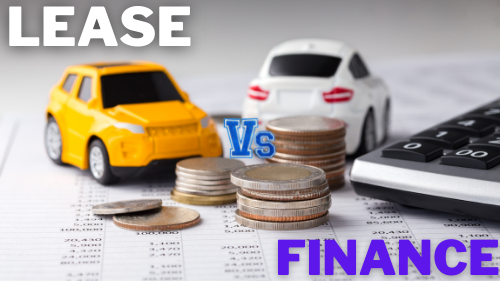What does it mean to lease a car?
Leasing a car is similar to renting to own a home, the lessee doesn’t own the car and has no equity in it despite the monthly payments. As with renting to own a home, your car lease payment will remain the same for the duration of the lease term. This is different from just leasing a home where the lease amount may increase at the beginning of each lease year.
When you lease a car, there’s a predetermined buy-out price which is the balance of the cost of the car that wasn’t considered for the lease amortization. The lessee has the right to purchase the car for the buy-out price at the end of the lease term, but also has the right to just return it to the dealer and walk away.
What does it mean to finance a car?
Financing a car is similar to buying a home. The purchaser owns the car but the financing company will have a lien on the car until payments are completed. The cost of the car including taxes and other fees are amortized over a period of time and when the payment period ends, the purchaser owns the car free and clear.
Should I Finance or Lease The Car?
There are both advantages and disadvantages to leasing and financing a car, so your decision as to whether you lease or finance your next car shouldn’t be done hastily. It should be based on your situation and what you want to achieve, and you should learn about the pros and cons in both cases.
The table below has some advantages and disadvantages of leasing vs financing a car. Those are not the only ones but they are the most popular ones to consider.
| Lease the car | Finance the car |
| Advantages | Disadvantages |
| Lower monthly payments | Higher monthly payments |
| Not stuck with an older car at the end of the lease term. | Stuck with an older car at the end of the payment period |
| No expensive repairs (not the lessee’s car) | Potential expensive repairs (purchaser owns the car) |
| Lower down payment | Higher down payment |
| Allows you to try-out a car that you may not be certain you want and return at the end | Cannot return the car – no trial period |
| Disadvantages | Advantages |
| Doesn’t own the car | Owns the car |
| Is never payment free when leasing the car | Payment free after paying off the car loan |
| Limit on the amount of kilometres that can be driven each year | No limit on the number of kilometres driven each year |
| No equity in the car (Nothing to trade-in towards purchasing a newer car) | Equity in the car (Can trade-in towards purchasing a newer car) |
Most lease terms are typically from 2 to 4 years, while a financing term could be up to 7 years to reduce monthly payments. Even though the lease term is shorter, because you’re only paying for the depreciation value of the car when you lease, the payments are usually lower and more affordable.
For people who prefer to drive later car models, with the newest technology, leasing may be the better option because the value of a car depreciates significantly for the first 2 to 3 years. Also, car warranties usually expire after 3 to 4 years, so the more expensive repairs are typically after the leasing period ends. So people who don’t want to pay for expensive repairs may prefer to lease their car.
Many business owners prefer to lease their cars to ensure reliability, avoid expensive repairs and stick to lower monthly payments. Moreover, a percentage of the lease payments are tax deductible if the car is used for business purposes. To learn more about eligible tax deduction relating to leasing a car you can visit the government of Canada website.
If you think you will be doing a lot of driving or you’re looking to own a car for a long time, financing may be the better option. But if the payments may not be affordable, you could lease the car first, then buy it out at the end of the leasing term. This will help to keep your payments low and there is no penalty for driving more than the allotted kilometres since you will be buying out the car anyway.
Regardless of whether you’re leasing or financing your next car, it’s important to do your research and pay attention to the fine print to avoid spending more money than necessary in the long run.

